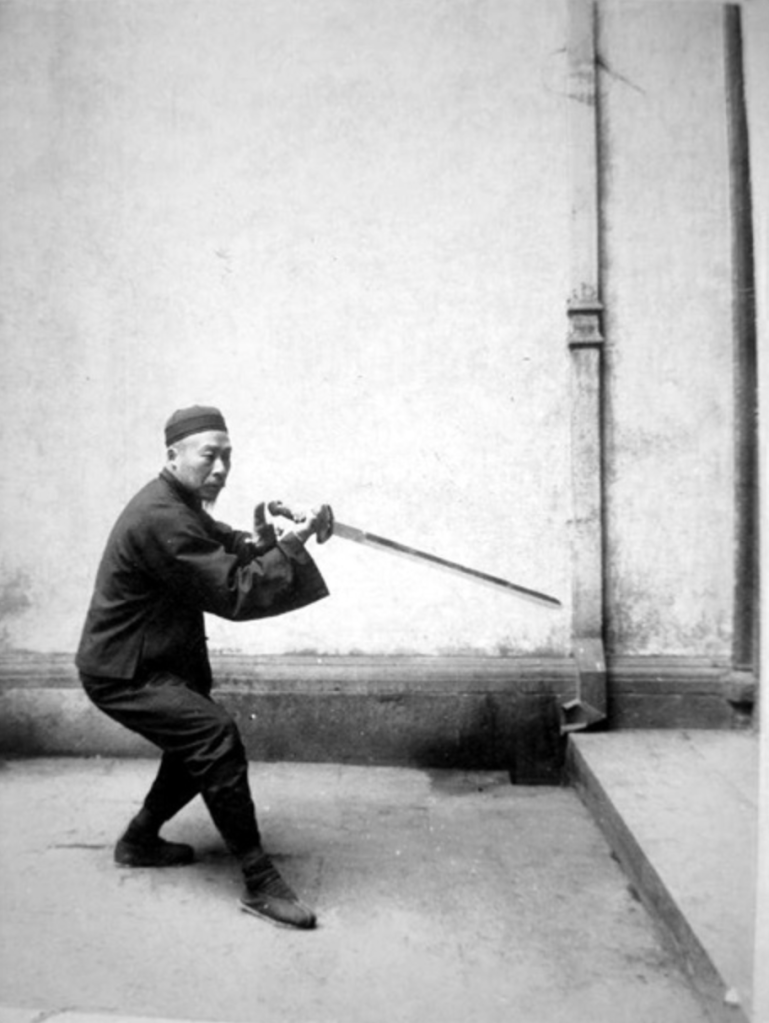

I listened to a rather interesting comment in a podcast recently from a Tai Chi practitioner who preferred to do weapons forms rather than hand forms because “Tai Chi is really a battlefield art” and the postures in the hand form are clearly derived from holding weapons, and it was therefore more authentic to practice the weapons forms. The implication is also that the hand forms were retrofitted onto the art, while the weapons forms are the true origin.
There’s some truth in this idea depending on which art you art talking about, of course. Xing Yi for example – there’s no doubt that the weapons forms came first. Doing a Beng Chuan (a straight punch to the belly or chest area) barehand, as presented in the classical 5 Elements form, leaves a lot of questions unanswered – why is your head not protected as you punch forward, for example? Why is your other hand pulled back at your hip where it’s not doing much of anything? What stops them punching you in the face?

As a barehand method, it’s clearly sub-optimal. Put a spear in your hand, and even better, wear armour, and it starts to make a lot more sense though. The hand withdrawing to your hip is pulling the spear back after a thrust, for example.
But if we’re talking about the long, elaborate weapons forms found in Tai Chi, done usually in silk pyjamas, then you’ve got to ask yourself – what good is all that dancing about if your goal is martial effectiveness on the battlefield? Do you think Chinese soldiers, village militia or bodyguards with spears or Guan Dao did this kind of practice? I don’t think they did. Or maybe they did for demonstrations at the many and frequent festivals in old imperial China in the Qing Dynasty, but what use is all that on a battlefield?
While using a spear, for example, might be connecting your art back to an earlier time and usage, I’m not sure that your 180-move spear form, with jumps, twirls and spins is any more “authentic” than a modern day hand form.
It’s very easy to fool yourself in Chinese martial arts. Stay sharp!






